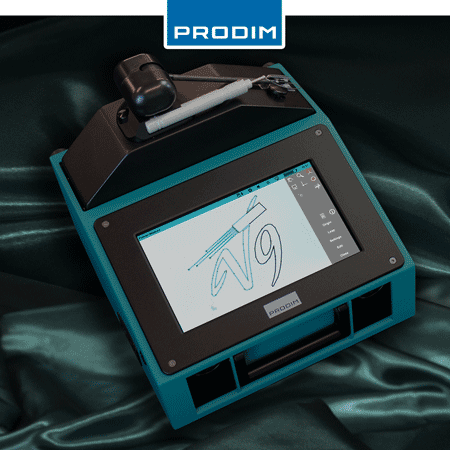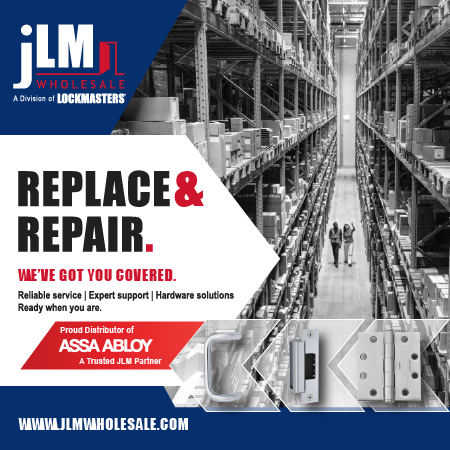
Above: CRL Cielo Post Windscreen System installed in a rooftop dining terrace. Photo courtesy of CRL.
Railings and windscreens are essential architectural elements, not only making exterior spaces safer but more livable and enjoyable. In particular, glass railings and windscreens protect occupants from the elements while providing breathtaking views for living spaces and entertainment areas.
Installation of railings and windscreens on high-rise structures requires planning, organization and meticulous attention to detail. Working at heights is inherently hazardous, with risks to the installer, construction personnel and pedestrians beneath the worksite.
The trend to incorporate glass railings and windscreens into high-rise structures, both commercial and residential, shows no sign of slowing down. Therefore, adhering to best practices for safe installation of these elements is essential to the safety of glaziers.
Safety starts with equipment
Working at high elevations when installing railings and windscreens requires the handling of large, awkward and often heavy components and materials. Wind and other weather can also have a significant impact on the work environment. These conditions can create a dangerous worksite for installers.
For glaziers, Occupational Safety and Health Administration regulation 1926.502 provides important guidelines for fall protection of all kinds, including during railing installations. These comprehensive regulations require the use of fall protection measures at elevations starting at just 4 feet.
Active and passive safety gear options are used by glaziers during the railing installation process, including tethering mechanisms, safety vests and hard hats. Some sites, such as mid- and high-rise commercial towers, require platforms to provide enhanced stability to safely conduct railing installations, including suspended scaffolds or powered platforms. For projects utilizing large glass panes, typically in excess of 60 inches by 48 inches, cranes are often used to lower heavy glass panels into place for glaziers to complete the installation.
Innovations enhance safety
In the past, wet glazing was the standard for glass railing installations. The process includes installation of the base shoe channel, installation of the glass, mixing and pouring of expansion cement into the channel, and finally the insertion of a gasket to seal the base shoe and help prevent water and dirt from entering.
The wet-glaze installation process requires installers to spend significant time working on the building’s edge. The more time spent in these precarious work zones, the increased possibility of accidents. Technological innovations are improving safety during railing installations, as well as during repair and maintenance, reducing the amount of time glaziers spend working at the building’s edge.
Dry-glazed systems offer a significant advantage by using mechanical components to secure the glass pane in place. These systems are designed to fasten glass panes in the base shoe without liquid grout or cement. Dry glazing typically uses devices that expand within the base shoe when tightened, mechanically securing the glass pane. The process can be completed from inside the balcony or terrace without reaching over the top rail, making glaziers more efficient and minimizing hazardous work time at the building’s edge.
Cleaning and maintenance safety
Installation is merely the start to railing safety considerations. Repair and replacement of broken or malfunctioning railing systems bring about unique safety concerns. Working with installed materials can sometimes be more complicated than the initial installation. When the glass in wet-glazed systems needs to be replaced, it requires the painstaking process of chiseling out the cement adhesive in the base shoe, an effort that must be conducted at the platform edge. Dry-glazed systems eliminate this risky process as glass panes are held in place by mechanical devices that can efficiently be loosened, freeing the glass without chiseling.
Cleaning exterior glass railings is an ongoing concern, especially in tall buildings. Use of scaffolding is the preferred option for safely cleaning exterior glass railings. But glass railings and windscreens on some structures are cleaned from an interior position, requiring use of regulated safety equipment, such as harnesses, lanyards and anchor points that provide fall arrest.
Innovations in glass coatings are a useful way to improve worker safety by reducing the frequency of cleanings. Today’s coatings typically last for years, repelling water and other liquids to prevent spotting and reduce aging. The chemical composition of these coatings also prevents contaminants from adhering to the glass, making the need for regular cleanings less frequent.
Advanced technologies enhance safety
Installing railings and windscreens on high-rise structures mandates vigilant use of safety procedures and equipment. But advances in glass railing and windscreen technologies that minimize the amount of time glaziers spend on or over a building’s edge are essential components of an evolving approach to glazier safety.


